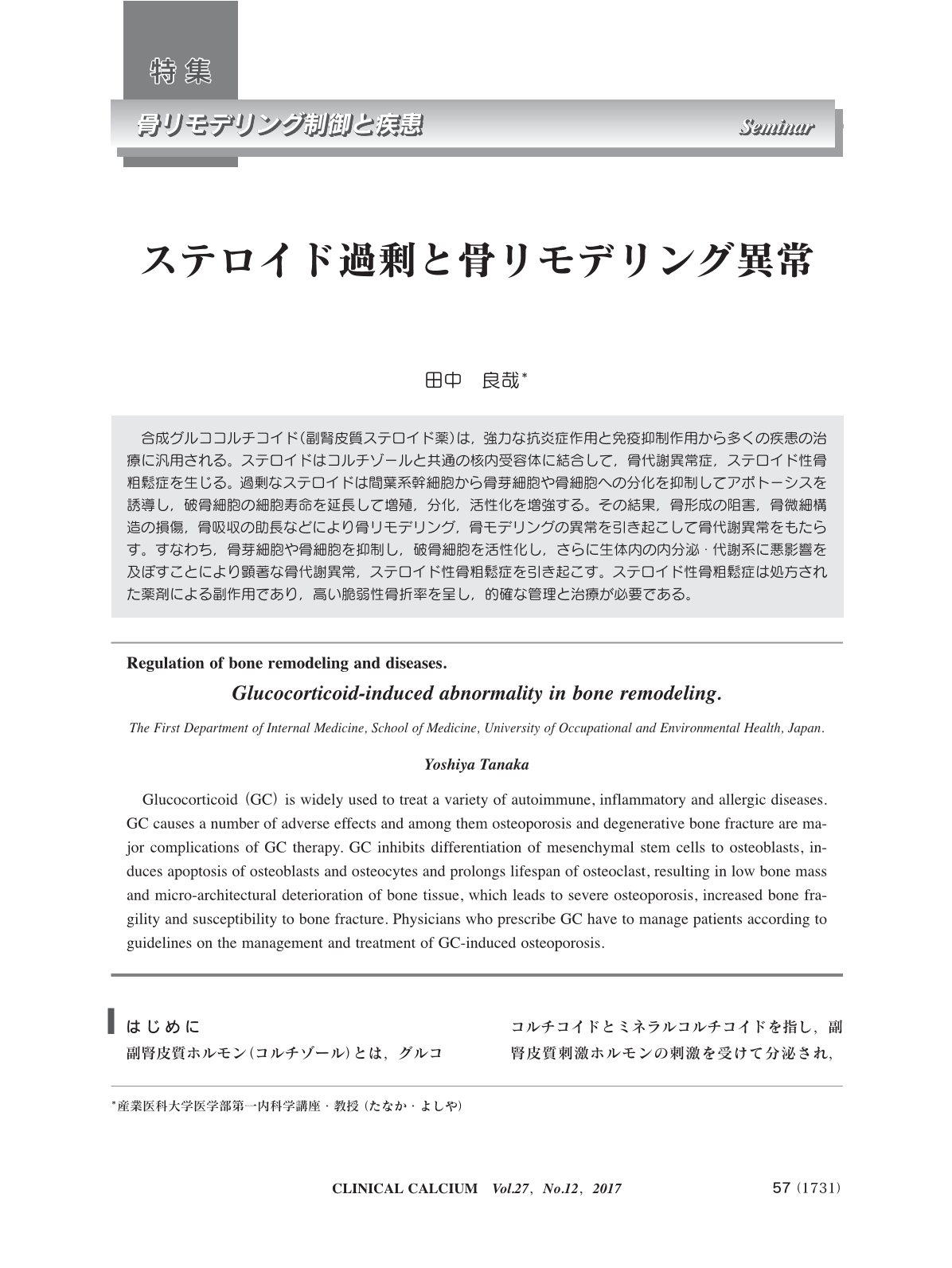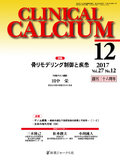Japanese
English
- 有料閲覧
- Abstract 文献概要
- 1ページ目 Look Inside
- 参考文献 Reference
合成グルココルチコイド(副腎皮質ステロイド薬)は,強力な抗炎症作用と免疫抑制作用から多くの疾患の治療に汎用される。ステロイドはコルチゾールと共通の核内受容体に結合して,骨代謝異常症,ステロイド性骨粗鬆症を生じる。過剰なステロイドは間葉系幹細胞から骨芽細胞や骨細胞への分化を抑制してアポトーシスを誘導し,破骨細胞の細胞寿命を延長して増殖,分化,活性化を増強する。その結果,骨形成の阻害,骨微細構造の損傷,骨吸収の助長などにより骨リモデリング,骨モデリングの異常を引き起こして骨代謝異常をもたらす。すなわち,骨芽細胞や骨細胞を抑制し,破骨細胞を活性化し,さらに生体内の内分泌・代謝系に悪影響を及ぼすことにより顕著な骨代謝異常,ステロイド性骨粗鬆症を引き起こす。ステロイド性骨粗鬆症は処方された薬剤による副作用であり,高い脆弱性骨折率を呈し,的確な管理と治療が必要である。
Glucocorticoid(GC)is widely used to treat a variety of autoimmune, inflammatory and allergic diseases. GC causes a number of adverse effects and among them osteoporosis and degenerative bone fracture are major complications of GC therapy. GC inhibits differentiation of mesenchymal stem cells to osteoblasts, induces apoptosis of osteoblasts and osteocytes and prolongs lifespan of osteoclast, resulting in low bone mass and micro-architectural deterioration of bone tissue, which leads to severe osteoporosis, increased bone fragility and susceptibility to bone fracture. Physicians who prescribe GC have to manage patients according to guidelines on the management and treatment of GC-induced osteoporosis.



